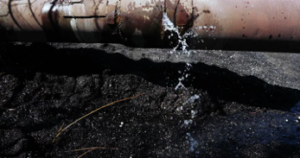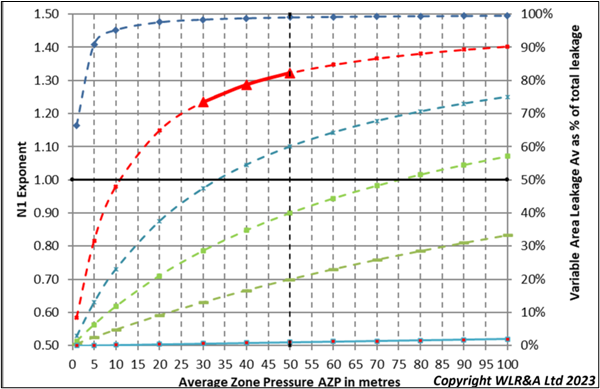N1 CALC

Did you know that N1 is not a fixed value?
For simplicity, many practitioners use fixed values of N1 in their leakage calculations; however, this approach can cause problems, as N1 can vary significantly with pressure.
If a Zone or DMA operates at very low or higher than average AZP, it is very important to understand the N1:AZP relationship, so that you can more accurately model the impact of pressure management on leakage levels.

Fixed Area Leaks, occurring in rigid pipes, have an N1=0.5, meaning that the leak flow rate is not very sensitive to changes in pressure.
For Fixed Area Leaks, a 10% increase in pressure results in a 5% increase in leak flow rate.


Variable Area Leaks, occurring in flexible pipes, and background leakage have an N1=1.5, meaning that the leak flow rate is much more sensitive to changes in pressure.
A 10% increase in pressure results in a 15% increase in leak flow rate.

Most good quality N1 tests produce a value for N1 which is between 0.5 – 1.5
A good quality N1 test – where Average Zone Pressure is gradually reduced at night, until steady values of Average Zone Night Pressure and flow rate have been reached – usually produces N1 values of between 0.5 and 1.5
N1 Calc calculates the value of N1 at an average AZP and establishes the relationship between N1 and AZP for that zone or DMA
Once you have a good quality N1 test for a zone or DMA, N1 Calc can calculate the value of N1 at a specific AZP, which will place that zone or DMA somewhere within a family of curve, shown in this graph.

This will derive the relationship in that zone or DMA between AZP and N1.
WLR&A have been able to show that these curves are the key to more reliable system-specific calculations of pressure:leak flowrate relationships
All these methods have already been field tested and used on actual DMAs in operational systems in different countries



